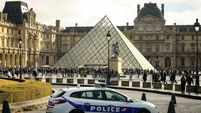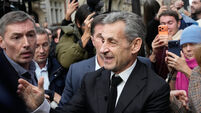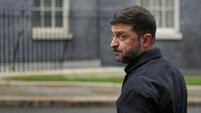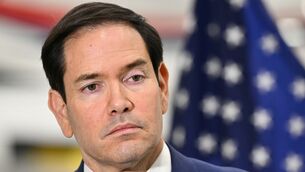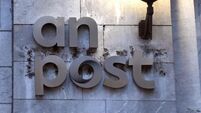‘Mad dog’ owed his longevity to Libya’s vast oil reserves

He was both condemned and courted by the West, while he brutally warped his country with his idiosyncratic vision of autocratic rule until he was finally toppled by his own people.
The modern Arab world’s longest-ruling figure, Libya’s Brother Leader displayed striking contrasts. He was a sponsor of terrorism whose regime was blamed for blowing up two passenger jets, who then helped the US in the war on terror.
He was an Arab nationalist who mocked Arab rulers. In the crowning paradox, he preached a “revolutionary” utopia of people power but ran a one-man dictatorship that fuelled the revolution against him.
His death, aged 69, came as Libyan fighters defeated Gaddafi’s last pockets of resistance in his home town of Sirte.
Their final declaration of victory came weeks after Gaddafi was swept from power by rebels who drove triumphantly into Tripoli on August 21, capping a six-month civil war.
“Dance, sing and fight!” Gaddafi had exhorted his followers, even as his enemies were on the capital’s doorstep, before fleeing into Libya’s hinterlands.
Gaddafi leaves behind an oil-rich nation of 6.5 million people, traumatised by a rule that drained it of institutions while the ship of state was directed by the whims of one man and his family.
Notorious for his extravagant outfits — ranging from white suits and sunglasses to military uniforms with frilled epaulets to brilliantly coloured robes decorated with the map of Africa — he styled himself as a combination Bedouin chief and philosopher king.
He revelled in infuriating leaders, whether in the West or the Middle East. US president Ronald Reagan, after the 1986 bombing that killed US servicemen in Berlin blamed on Libya, branded him a “mad dog.”
Former Egyptian president Anwar Sadat, who fought a border war with Libya in the 1970s, wrote in his diary that Gaddafi was “mentally sick” and “needs treatment.”
The sole constant was his grip on the country. Numerous coup and assassination attempts against him mostly ended with public executions of the plotters, hanged in city squares.
The ultimate secret of his longevity lay in the vast oil reserves under his North African desert nation and in his capacity for drastic changes of course when necessary. The most spectacular U-turn came in late 2003. After years of denial, Libya acknowledged responsibility — though in a Gaddafi-esque twist of logic, not guilt — for the 1988 bombing of Pan Am Flight 103 over Lockerbie, Scotland, that killed 270 people. He agreed to pay up to $10 million (€7.3m) to relatives of each victim.
He also announced Libya would dismantle its nuclear, chemical and biological weapons programmes under international supervision.
The rewards came fast. Within months, the US lifted economic sanctions and resumed diplomatic ties. The EU hosted Gaddafi in Brussels. Secretary of State Condoleezza Rice in 2008 became the highest-ranking US official to visit the country in more than 50 years. Tony Blair, as prime minister, visited him in Tripoli.
International oil companies rushed to invest in Libya’s fields.
Documents uncovered after Gaddafi’s fall revealed close co-operation between his intelligence services and the CIA in pursuing terror suspects after the 9/11 attacks, even before the US lifted its designation of Libya as a sponsor of terror in 2006.
But Gaddafi became an instant pariah once more when he began a brutal crackdown on the February uprising that grew out of the “Arab Spring” of popular revolts across the region.
“I am a fighter, a revolutionary from tents. ... I will die as a martyr at the end,” he proclaimed in one of his last televised speeches during the uprising.
In 1969, as a mere 27-year-old captain, he emerged as leader of a group of officers who overthrew the monarchy of King Idris.
A handsome, dashing figure in uniform and sunglasses, Gaddafi took undisputed power and became a symbol of anti-Western defiance in a Third World recently liberated from its European colonial rulers.
In the 1970s and 1980s, Gaddafi supported groups deemed by the West to be terrorists — from the IRA through various radical Palestinian units to militant groups in the Philippines. He embarked on a series of military adventures in Africa, invading Chad in 1980-89, and supplying arms, training and finance to rebels in Liberia, Uganda and Burkina Faso.
A 1984 incident at the Libyan Embassy in London entrenched his regime’s image as a lawless one. A gunman inside the embassy opened fire on a demonstration by Gaddafi opponents outside, killing British policewoman Yvonne Fletcher.
The heat was rising, meanwhile, between the Reagan administration and Gaddafi over terrorism. In 1986, Libya was found responsible for a bombing at a Berlin discotheque frequented by US troops in which three people died. America struck back by sending warplanes to bomb Libya. About 40 Libyans died.
The Lockerbie bombing followed in 1988, followed a year later by a bombing that downed a French airliner over the West African nation of Niger. The West was outraged, and years of sanctions followed.
Libya’s road back from pariah status began in 1999, when Gaddafi’s government handed over two Libyans for trial in the Lockerbie bombing. In 2001, a Scottish court convicted one, an intelligence agent, and sentenced him to life imprisonment. The other was acquitted.
In the past decade, power was increasingly concentrated with his eight biological children, who snapped up elite military posts or lucrative business positions.
His British-educated son Saif al-Islam was widely seen as being groomed as a successor. There was no immediate word on his yesterday.
Gaddafi did spend oil revenue on building schools, hospitals, irrigation and housing on a scale his Mediterranean nation had never seen.
“He did really bring Libya from being one of the most backward and poorest countries in Africa to becoming an oil-rich state with an elaborate infrastructure and with reasonable access by the Libyan population to the essential services they required,” said George Joffe of Cambridge University.
Still, about a third of Libya’s people remain in poverty, with eastern Libya, ultimately the source of February’s rebellion, allowed to atrophy.






